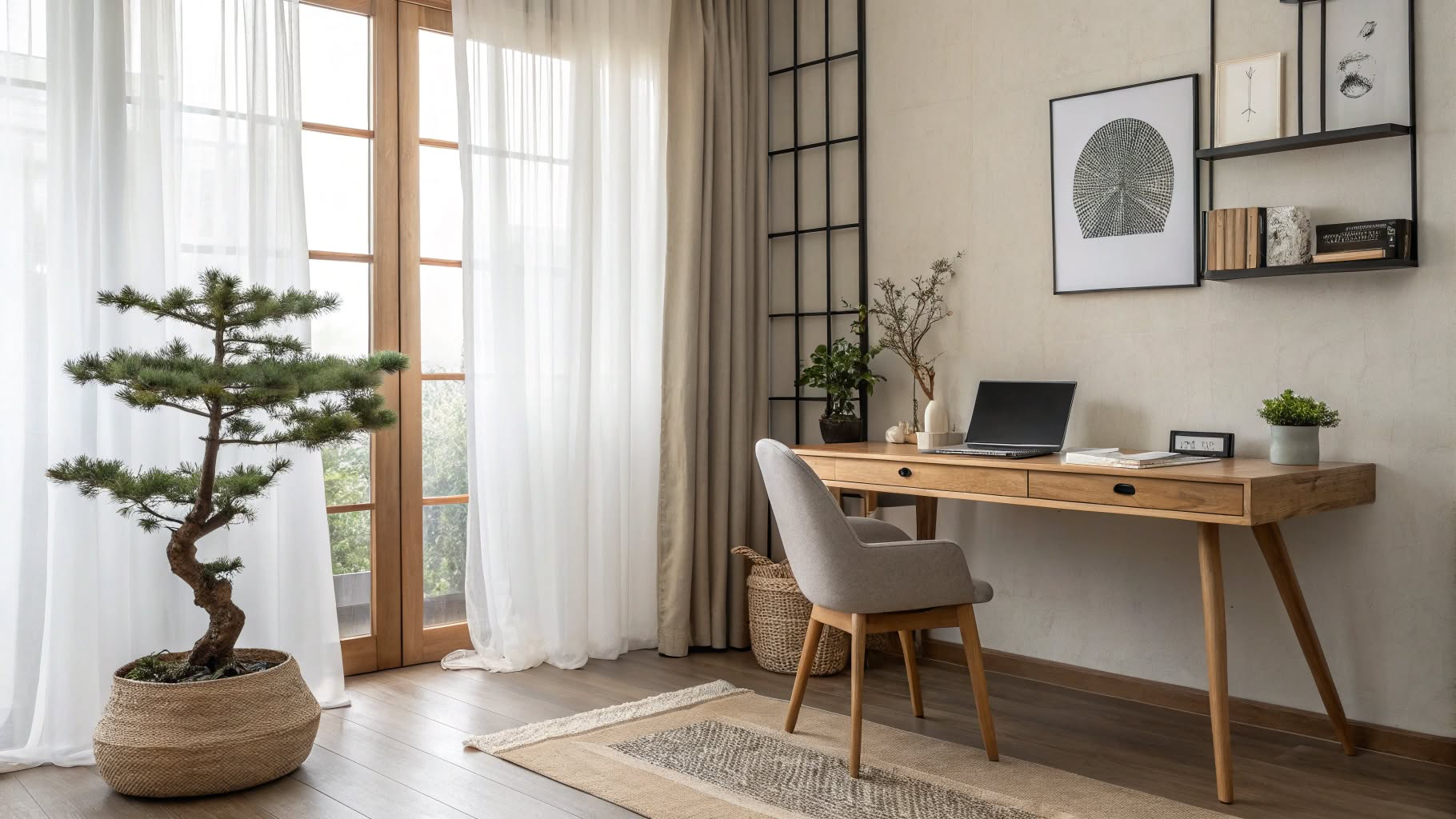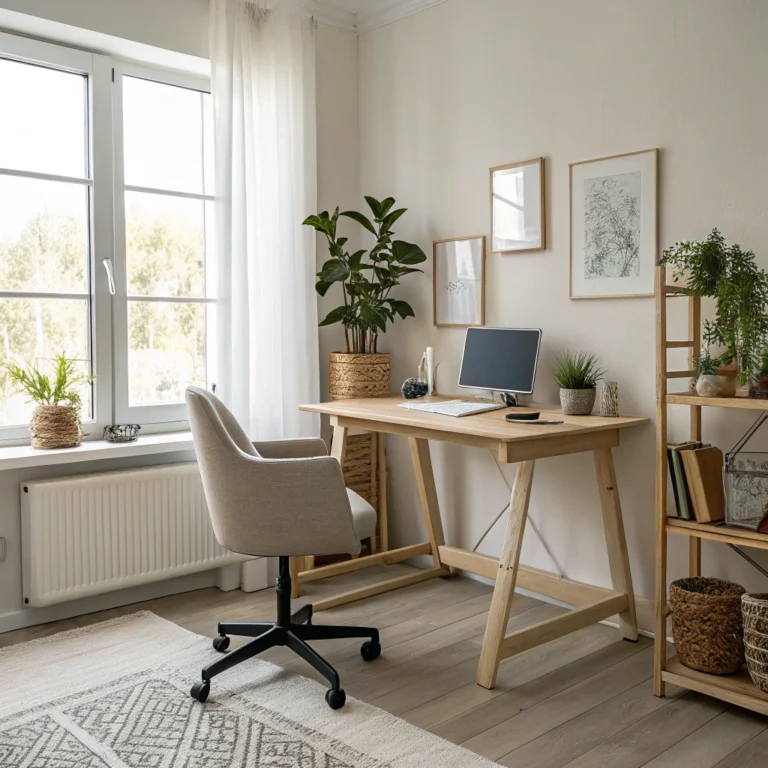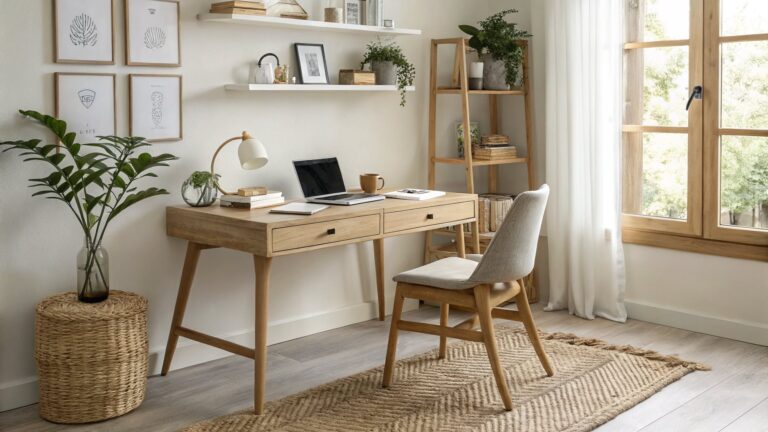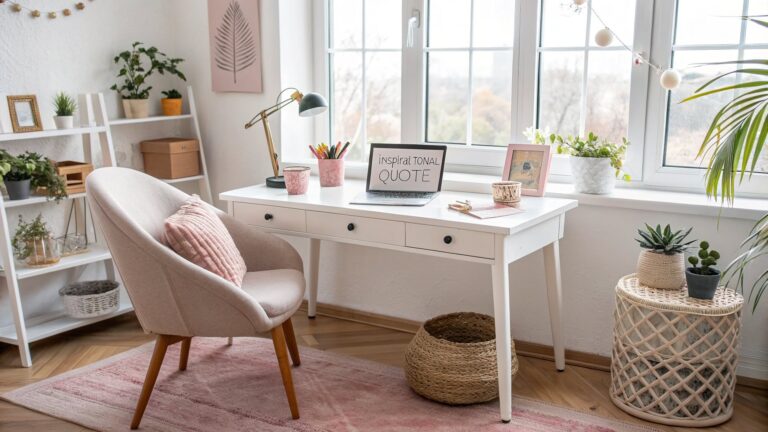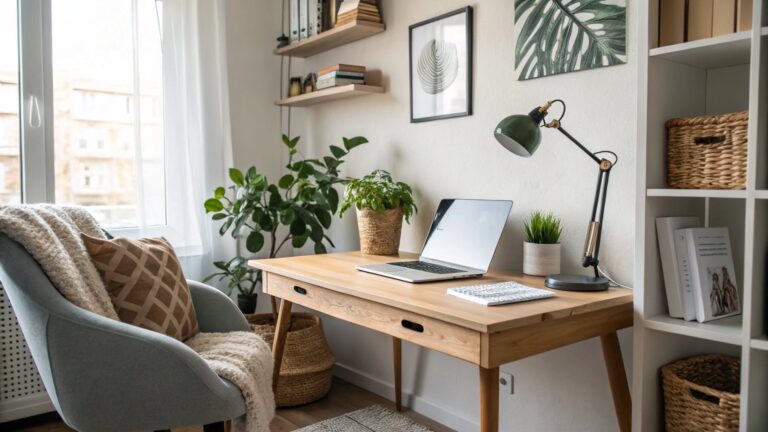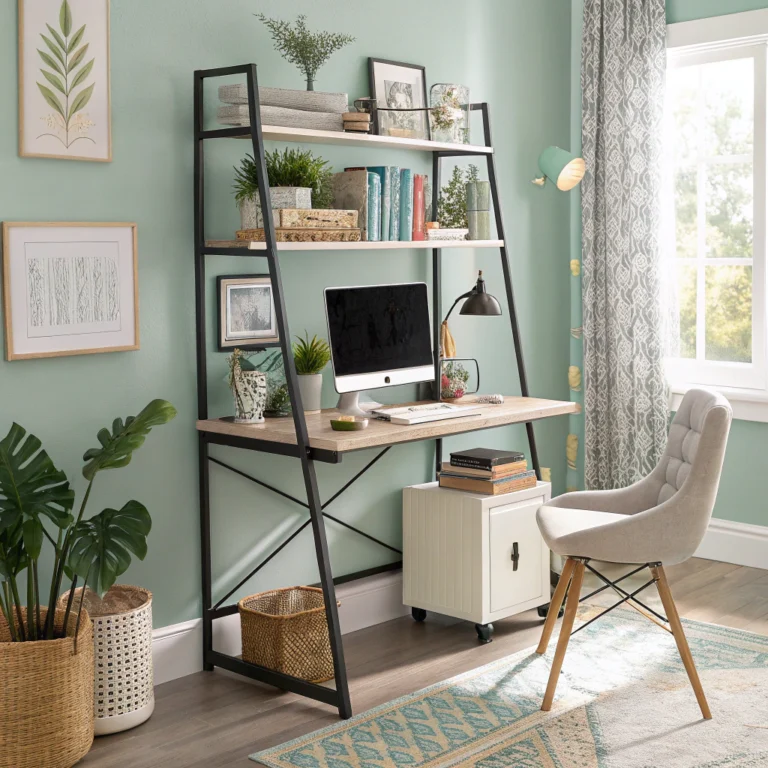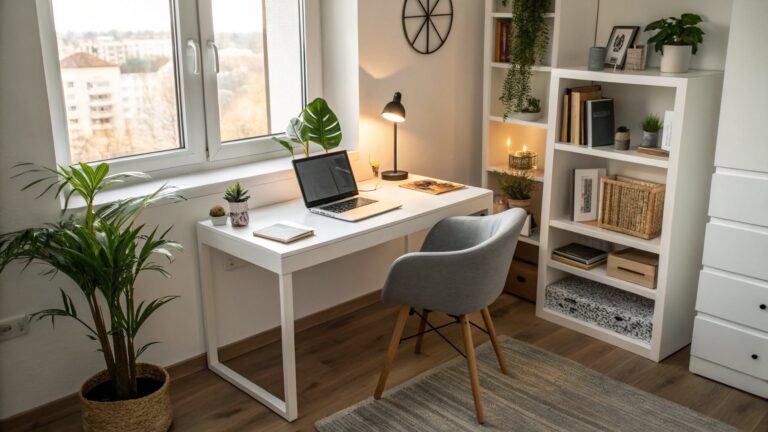Japandi Home Office Essential Minimalist Study Space Design
In our increasingly digital world, the home office has evolved from a luxury to a necessity. As we spend more hours at our desks, the environment we create directly impacts our productivity, creativity, and wellbeing. Enter Japandi design—a harmonious fusion of Japanese minimalism and Scandinavian functionality that creates spaces of unparalleled tranquility and purpose.
This aesthetic marries the warmth of Scandinavian hygge with the mindful simplicity of Japanese wabi-sabi philosophy, resulting in home offices that feel both inviting and intentional. Whether you’re designing a dedicated study or carving out a workspace in your living area, Japandi principles offer a blueprint for creating environments that reduce visual noise and mental clutter.
In this guide, we’ll explore how to craft a Japandi home office that supports focused work while nurturing your spirit—from selecting the perfect neutral palette and natural materials to incorporating mindful touches that elevate the everyday. You’ll discover how this thoughtful approach to design can transform not just your space, but your entire work experience, bringing a sense of calm purpose to even the most demanding days.
The Philosophy Behind Japandi Work Spaces
At its core, Japandi design is more than an aesthetic—it’s a philosophy that celebrates intentionality and mindfulness. This hybrid style combines Japanese minimalism, which finds beauty in imperfection and simplicity, with Scandinavian functionality, which prioritizes comfort without sacrificing style. In a home office setting, this translates to spaces that are deliberately curated to support concentration while maintaining a connection to nature and comfort.
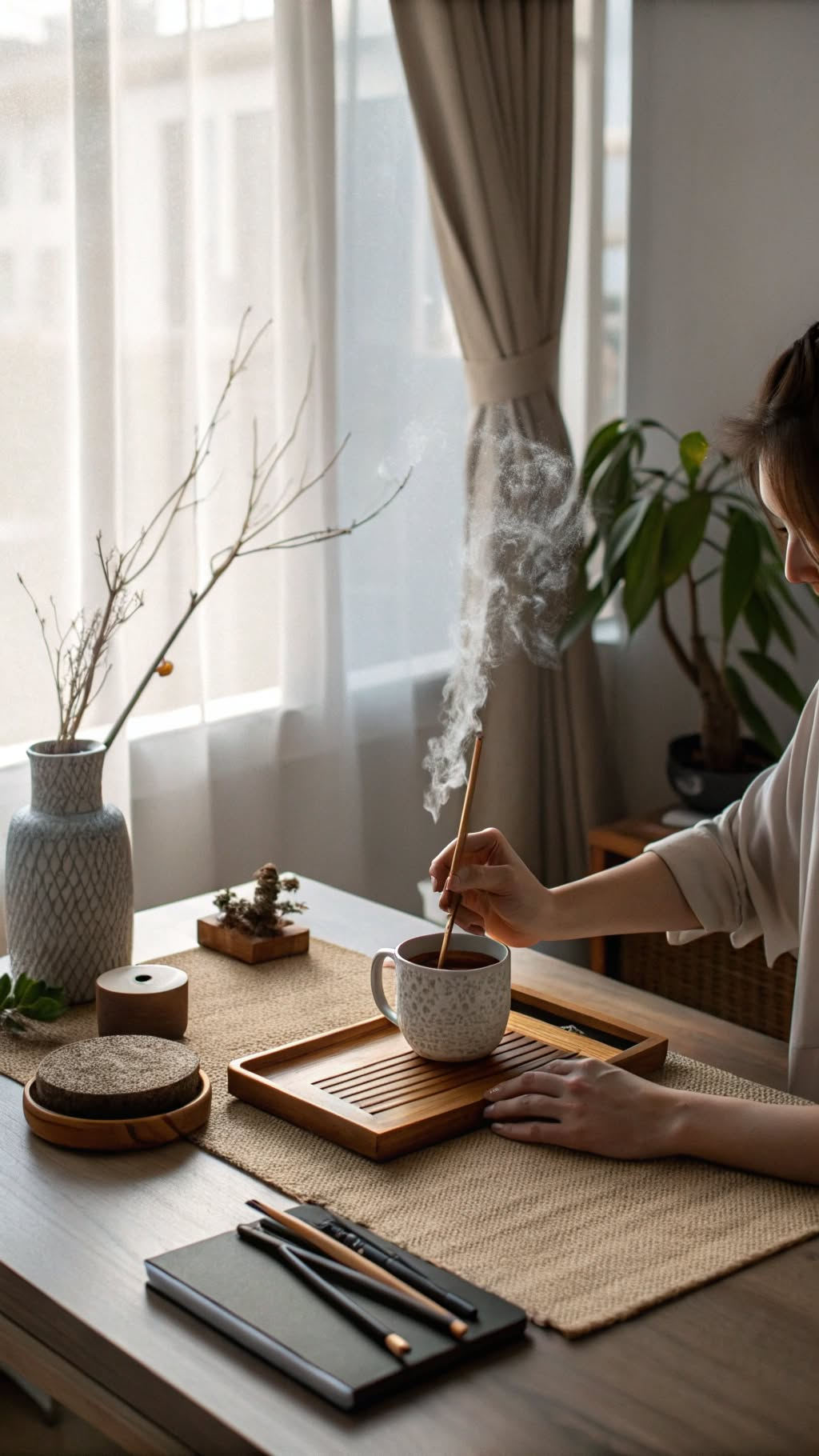
The Japanese concept of ‘ma’—the meaningful space between things—plays a crucial role in Japandi design. Rather than filling every corner, this philosophy encourages us to appreciate emptiness and give objects room to breathe. For a study space, this means resisting the urge to overcrowd your desk or walls, instead allowing for purposeful negative space that calms the mind. Similarly, the Scandinavian principle of ‘lagom’ (just enough) reminds us to include only what serves a purpose or brings genuine joy, avoiding both excess and scarcity.
When these principles guide your home office design, the result is a workspace that feels both grounding and uplifting. The emphasis on natural materials connects you to the earth, while the clean lines and uncluttered surfaces create a sense of order that facilitates clear thinking. By embracing imperfection through handcrafted elements alongside modern functionality, you create a space that feels authentic rather than sterile. This balance is particularly valuable in work environments, where we need both inspiration and practical efficiency to thrive.
Essential Elements: Furniture and Layout Principles
The foundation of any Japandi home office begins with thoughtfully selected furniture that embodies both form and function. Look for pieces with clean, horizontal lines and low profiles—characteristics that create a sense of groundedness essential to both Japanese and Scandinavian design traditions. A desk with simple wooden legs and a smooth top (preferably in oak, walnut, or ash) serves as your workspace anchor. Avoid ornate details or unnecessary embellishments; instead, let the natural grain of the wood speak for itself. Pair this with a chair that offers ergonomic support while maintaining visual lightness—perhaps a bentwood design or one with a woven seat that adds texture without visual weight.
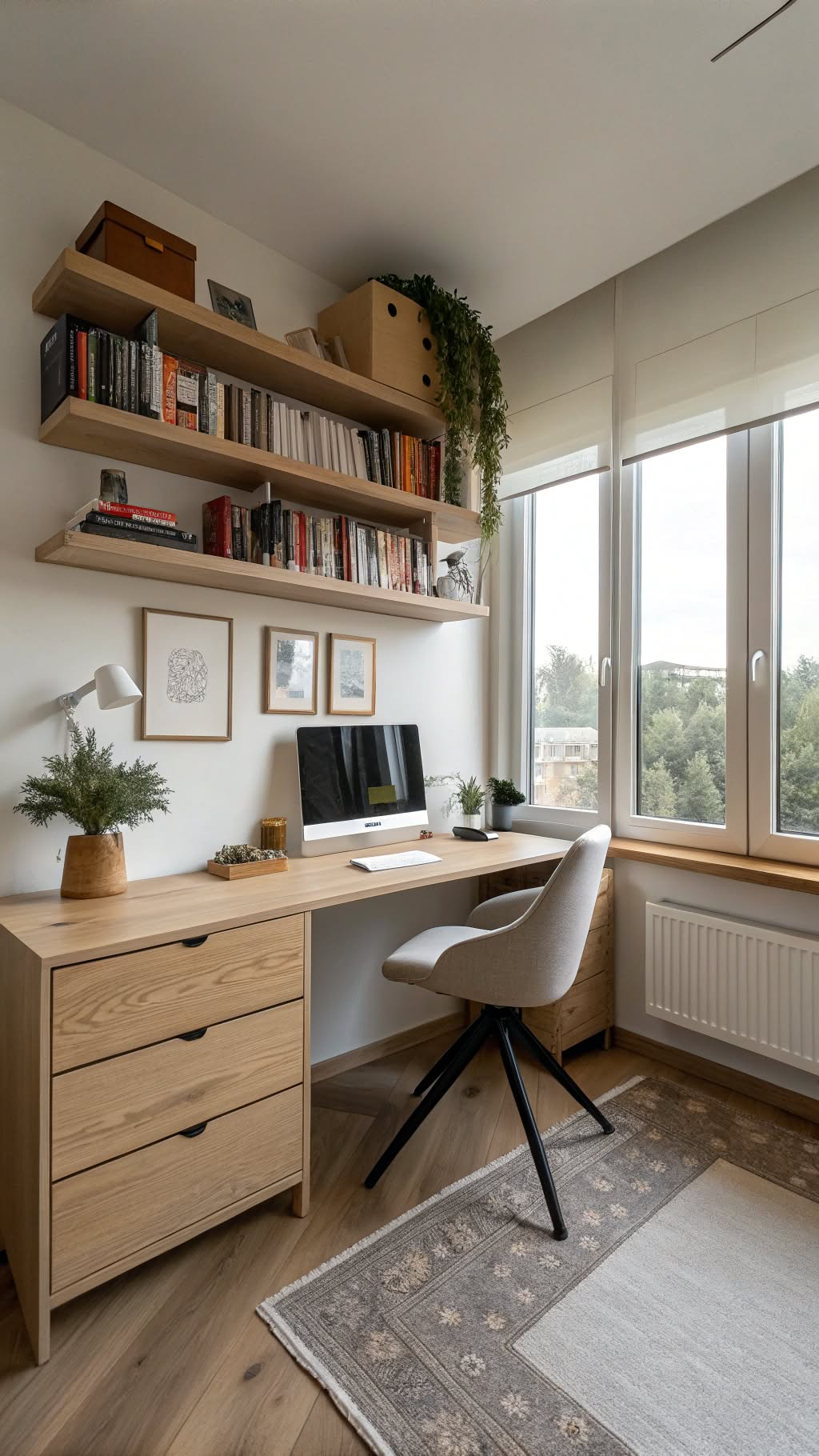
Layout in a Japandi workspace follows the principle of asymmetrical balance—a concept deeply rooted in Japanese aesthetics. Rather than creating perfect symmetry, which can feel static, aim for a thoughtful arrangement where visual weight is distributed harmoniously but not identically on either side of your focal point (typically your desk). Position your desk to take advantage of natural light, ideally facing a window or placed perpendicular to it to reduce screen glare while maintaining a connection to the outdoors. Keep circulation paths clear and generous, allowing for easy movement that contributes to the sense of spaciousness so central to Japandi design.
Storage solutions in a Japandi office prioritize concealment of visual clutter while maintaining accessibility. Consider closed cabinets with simple, handle-free fronts for items used less frequently, and open shelving (used sparingly) for beautiful objects that inspire your work. A floating shelf above your desk can house reference books or meaningful objects without consuming floor space. For items used daily, incorporate small containers in natural materials—ceramic vessels for pens, wooden trays for papers, or bamboo boxes for smaller supplies. By elevating these functional elements to objects of beauty in their own right, you transform organization from a chore into an aesthetic practice that enhances your environment.
Material and Color Harmony in Japandi Design
The Japandi palette draws from nature’s own subdued spectrum, creating environments that soothe rather than stimulate. Begin with a foundation of warm neutrals—soft whites, oatmeal, sand, and gentle grays—for walls and larger furniture pieces. These provide a calming backdrop that reduces visual noise and helps maintain focus during long work sessions. Against this neutral canvas, incorporate deeper accents inspired by both traditions: muted blues reminiscent of indigo dyeing techniques, forest greens that evoke Nordic woodlands, or perhaps terracotta tones that reference Japanese pottery. These accent colors should appear sparingly—perhaps in a desk lamp, a ceramic vessel, or a small textile—to provide visual interest without overwhelming the space.
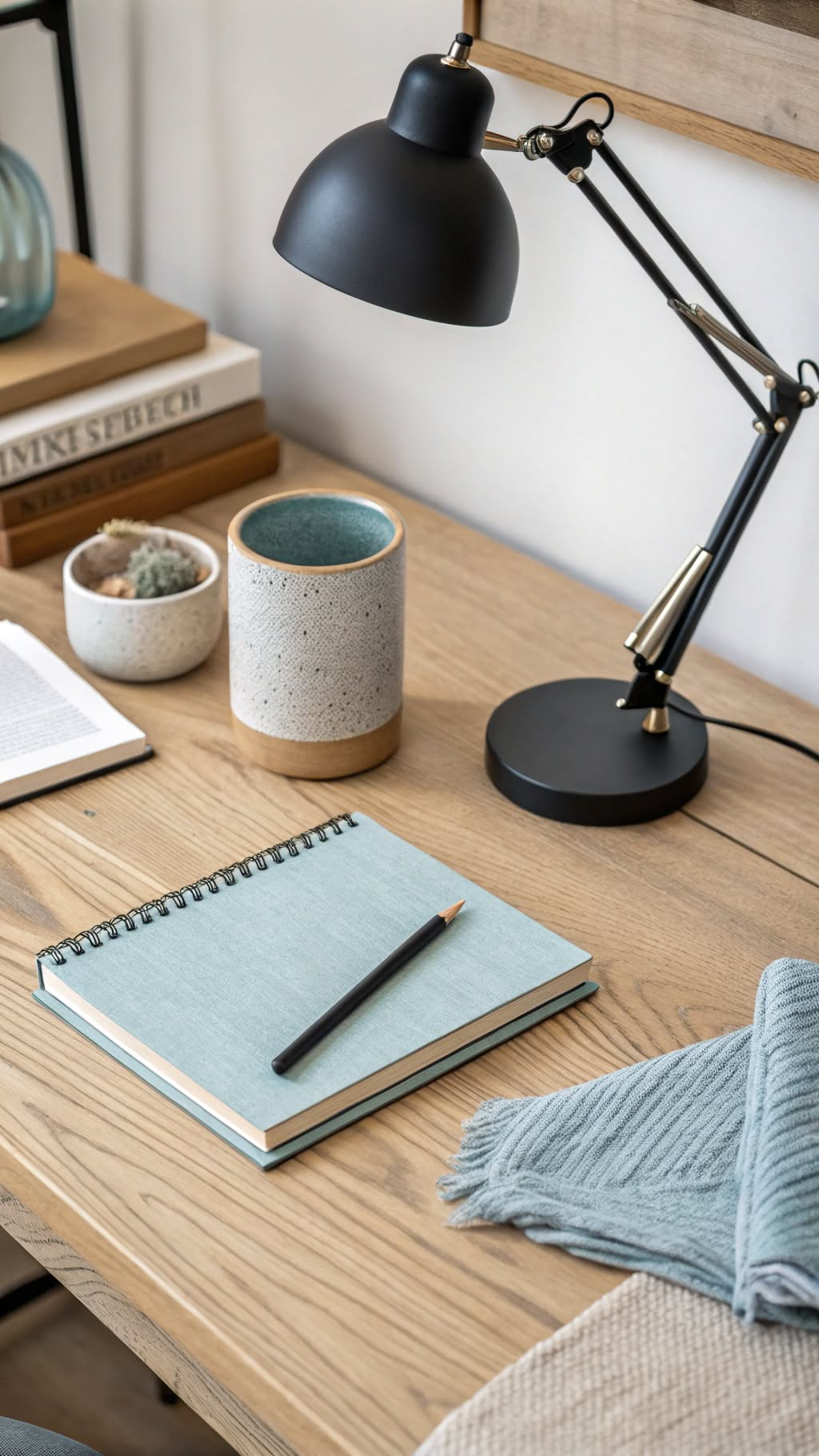
Materials in a Japandi office should feel substantial and authentic, with an emphasis on what is tactile and natural. Wood is paramount, appearing in furniture, flooring, and smaller objects, preferably in light to medium tones with visible grain patterns. Complement wooden elements with other natural materials: linen for curtains that filter light beautifully, wool for a small area rug that adds warmth underfoot, pottery for desktop organization, and perhaps a touch of rattan or bamboo for textural contrast. Metal elements—like lamp bases or hardware—should be matte rather than shiny, in brass, black, or brushed steel that recedes visually rather than calling attention to itself.
The interplay between these materials creates a multi-sensory environment that engages not just your sight but also your sense of touch. This tactile quality is essential to Japandi spaces, which recognize that our physical surroundings affect our mental state. When your fingers meet the smooth finish of a wooden desk, the soft texture of a linen cushion, or the pleasant weight of a ceramic mug, these small moments of sensory pleasure accumulate throughout your workday, creating an experience of subtle luxury that elevates the ordinary. This attention to material quality reflects the shared Japanese and Scandinavian belief that everyday objects should be both beautiful and functional—a philosophy particularly relevant to spaces where we spend our working hours.
Mindful Accessories and Thoughtful Technology Integration
In Japandi design, accessories are chosen with intention rather than accumulated by habit. For your home office, this means selecting a handful of meaningful items that serve either a functional purpose or provide genuine inspiration. Consider a single piece of wall art—perhaps a minimalist print, a Japanese ink painting, or a Scandinavian textile hanging—positioned where your eyes naturally rest when looking up from your work. A small indoor plant brings life to your space; consider varieties that thrive in indoor conditions with minimal care, such as a snake plant, ZZ plant, or a small bonsai for a distinctly Japanese touch. A handcrafted ceramic vessel holding writing instruments becomes both useful and decorative, while a simple vase with a single seasonal branch or flower embodies the Japanese practice of appreciating transient beauty.
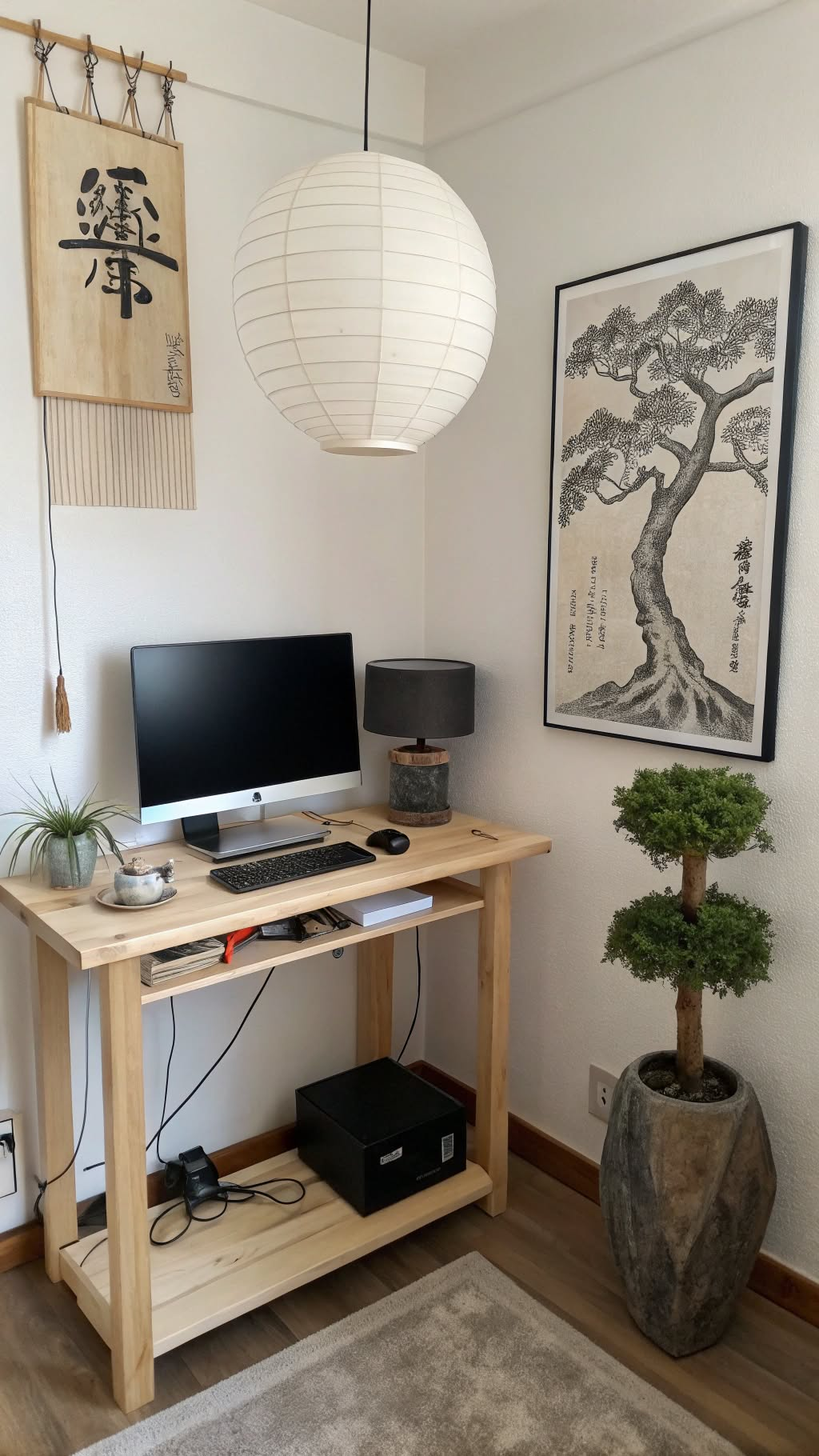
Technology presents a unique challenge in Japandi spaces, where modern functionality must coexist with natural aesthetics. The goal is to incorporate necessary devices without allowing them to dominate visually. Start by evaluating which technology you truly need at your fingertips, relocating less-used items to closed storage. For remaining devices, consider ways to minimize their presence: route cables through desk grommets or use cable organizers in materials like leather or wood that complement your design scheme. Choose monitors and peripherals in neutral colors with simple profiles, and consider furniture pieces specifically designed to house technology discreetly, such as desks with built-in charging stations or cable management systems.
Lighting deserves special attention in a Japandi office, as it dramatically affects both functionality and atmosphere. Prioritize natural light whenever possible, using sheer window coverings that diffuse harsh rays while maintaining connection to the outdoors. Supplement with layered artificial lighting: a task lamp with adjustable positioning for focused work, a secondary ambient light source that illuminates the room more generally, and perhaps a small accent light that highlights a particular architectural feature or art piece. Choose fixtures with simple forms in natural materials—a wooden base lamp, a paper lantern pendant, or a ceramic table lamp—that continue your material palette. This thoughtful approach to accessories and technology creates a workspace that feels purposeful rather than crowded, supporting concentration while maintaining the aesthetic integrity that makes Japandi design so appealing.
Creating Daily Rituals in Your Japandi Workspace
The physical environment of your Japandi office sets the stage, but it’s the rituals you practice within this space that truly bring its philosophy to life. Both Japanese and Scandinavian cultures value mindful daily practices that mark transitions and bring awareness to ordinary moments. Consider developing a morning ritual that prepares your space—and mind—for focused work: opening curtains to welcome natural light, wiping your desk with a cloth infused with essential oils, arranging your tools precisely, or preparing a cup of tea in a special ceramic vessel. These simple acts signal to your brain that it’s time to transition into work mode, while simultaneously honoring the space you’ve created.
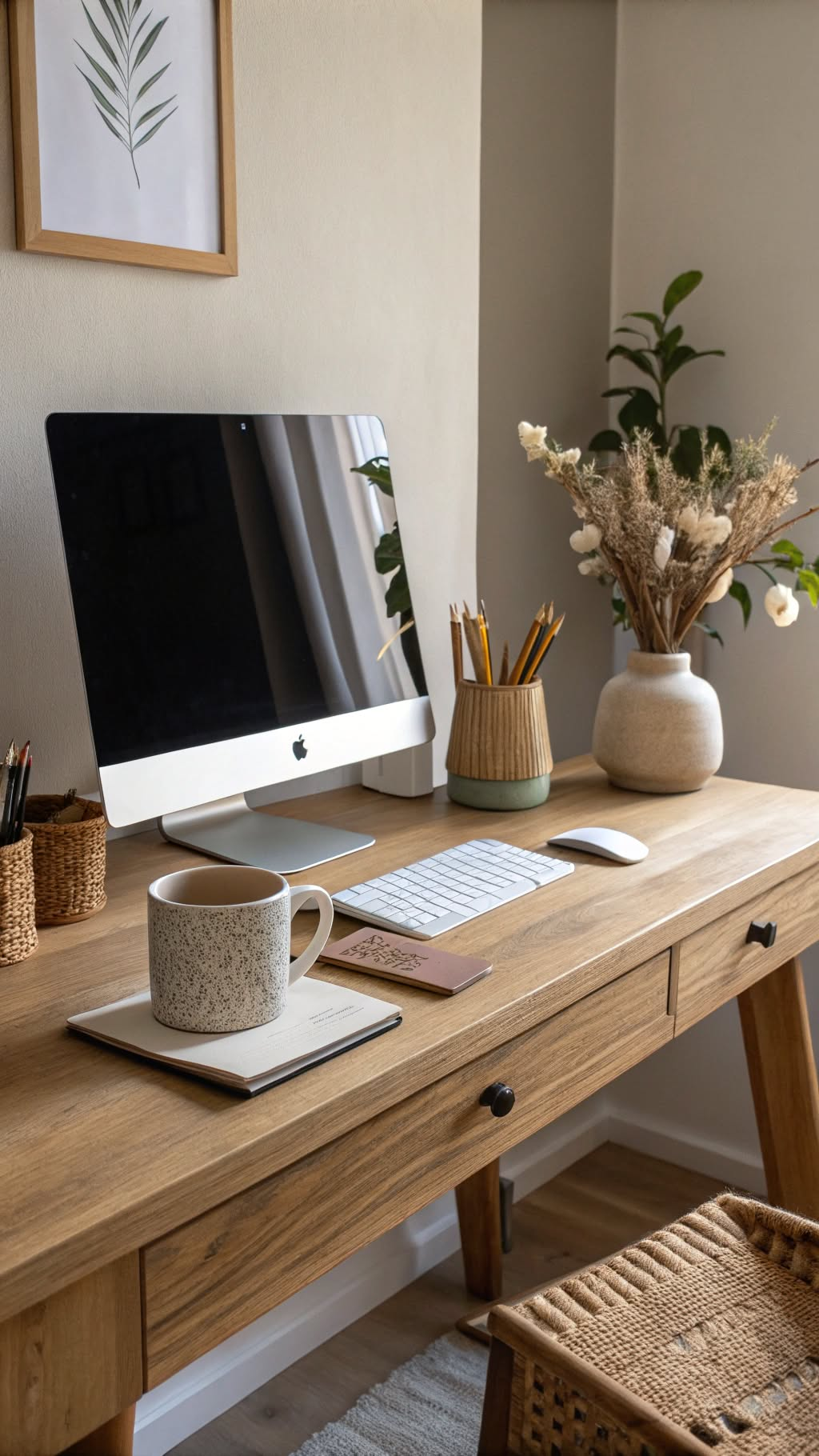
The concept of ‘ikigai’—finding joy in purposeful activity—can guide how you structure your work within your Japandi office. Rather than multitasking frantically, consider organizing your day into defined periods of concentrated effort, punctuated by mindful breaks. During these pauses, engage fully with your environment: observe the changing light across your desk throughout the day, feel the texture of your chair beneath you, or step outside briefly to reconnect with nature. These moments of presence refresh your mind while deepening your appreciation for your thoughtfully designed surroundings.
Maintenance becomes its own meaningful ritual in a Japandi workspace. Set aside time weekly to evaluate your environment with fresh eyes: Have unnecessary items accumulated? Are natural elements like plants being properly tended? Do any materials need care, such as oiling wooden surfaces or washing textiles? This regular assessment prevents the gradual creep of clutter that can undermine the serenity of your design. The Japanese practice of ‘oosouji’ (big cleaning) can inspire seasonal deeper attention to your space—perhaps reorganizing storage solutions, refreshing textiles, or introducing elements that reflect the changing season. Through these ongoing rituals of attention and care, your Japandi office remains not just a static design achievement but a living environment that continues to evolve and support your work in meaningful ways.
Conclusion
Creating a Japandi home office is more than a design project—it’s an investment in your daily wellbeing and productivity. By thoughtfully blending Japanese minimalism with Scandinavian functionality, you’ve crafted a space that works as hard as you do, but in different ways: reducing visual noise that drains mental energy, connecting you to natural elements that restore focus, and surrounding you with materials and objects that bring subtle joy to everyday tasks.
The beauty of this approach lies in its flexibility; whether you’re working with a dedicated room or a corner of your living space, Japandi principles can be adapted to your unique circumstances and needs. Remember that this design philosophy values progress over perfection—your workspace can evolve gradually as you discover what truly supports your work style and aesthetic preferences. Begin with the foundational elements we’ve explored: a thoughtfully selected desk and chair, a restrained palette of natural materials, mindful accessories, and intentional technology integration. Then allow your space to develop its own character through the daily rituals you practice within it.
As you inhabit your Japandi office over time, you may find that its influence extends beyond your workspace, inspiring more mindful approaches to other areas of your home and life. The invitation now is to take the first step—identify one element of your current workspace that could be transformed through Japandi principles, and make that single, intentional change. From that foundation, let your journey toward a more harmonious, productive, and peaceful work environment unfold naturally, one mindful decision at a time.
